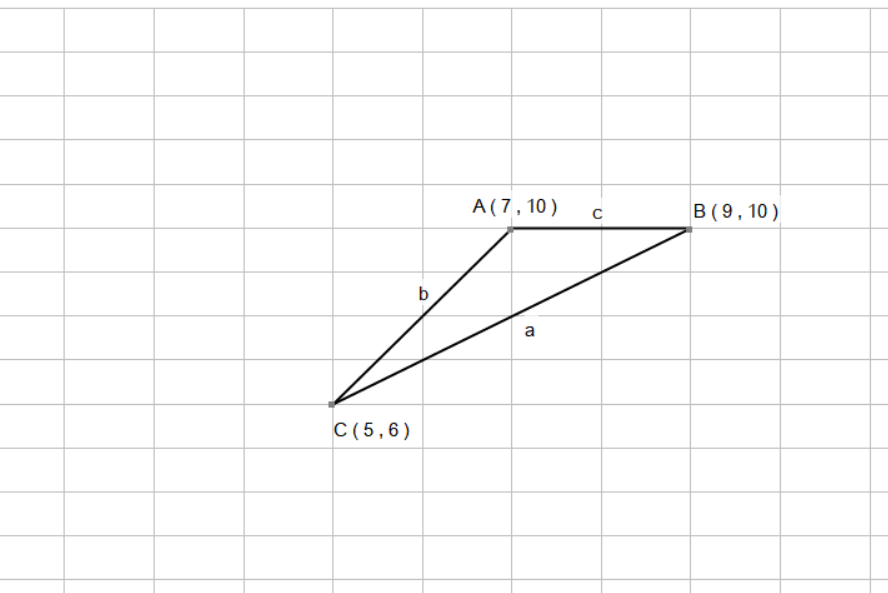A triangle is defined by the three points: a=(7, 10), b=(9, 10), and c= (5, 6). How do I determine all three angles in the triangle (in radians)?
We haven't gone over this yet in class and I'm lost. What equation(s) am I even suppose to use? How would I reason something like this out and know which steps to take?
We haven't gone over this yet in class and I'm lost. What equation(s) am I even suppose to use? How would I reason something like this out and know which steps to take?
1 Answer
See below.
Explanation:

I have marked the triangle in a more conventional way. The first thing we need to do, is find the length of the sides a , b and c. We can do this by using the Distance Formula. The Distance Formula states, where d is the distance, that:
So:
We now know all 3 sides, but since we don't know any angles, we will have to use the Cosine Rule.
The Cosine Rule states that:
Angle A:
We rearrange the formula for angle B.
Angle B:
Angle C:
So solution is:
3 .d.p.

